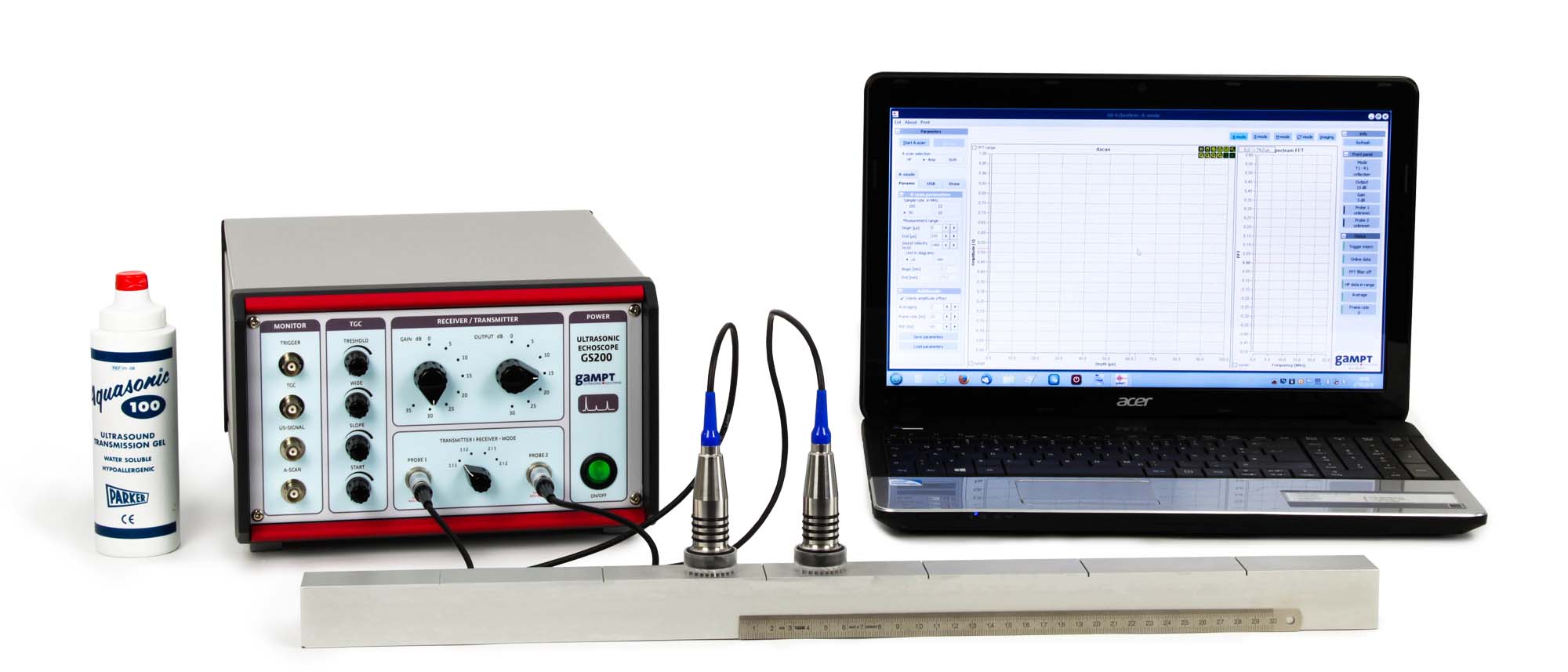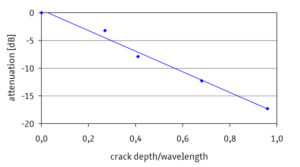Article No. VK-IND02
IND02 Detection of cracks with Rayleigh waves
Examination and propagation of Rayleigh waves along an aluminum test block
- Subject matter of the experiment
- Theoretische und praktische Aspekte zum Versuch
- Results
- Equipment
- Related Experiments
In the experiment, the formation and propagation of Rayleigh waves is investigated. The sound velocity of the Rayleigh waves is ascertained and the dependence of the transmission amplitude of the Rayleigh waves on the crack depth is determined based on cracks of different depths.
Keywords: Longitudinal wave, surface acoustic wave, Rayleigh wave, sound velocity, sound wavelength, crack depth, reflection, transmission, mode conversion
Rayleigh waves are surface waves that propagate along the free boundary of a solid. They represent a combination of longitudinal and transversal particle shifts. They can be used to detect surface faults. In the experiment, a test block with defined cracks as surface faults is investigated. The Rayleigh waves are produced by mode conversion from longitudinal waves by means of a 90° probe, where a special attachment with a comb-shaped structure is used. The velocity of the Rayleigh waves is ascertained as a difference calculation from time of flight measurements for different probe spacing. The reflection or transmission amplitude of a Rayleigh wave can be set in relation to the crack depth in the case of crack depths in the range of their wavelength. By comparing transmission amplitudes without and with crack, the crack depth can be estimated.
For the aluminium test block, a Rayleigh wave velocity of approx. 2920 m/s was ascertained. For the probe frequency of 1 MHz, a wavelength of approx. 2.92 mm results. For the determination of crack depth, the probes acting as transmitters and/or receivers were each placed at a distance of 5 cm away from the investigated crack. In the diagram, the attenuation of the transmission signal is entered for different crack depths; the crack depth is here entered in relation to the wavelength. For the investigated crack depth range, there results an almost linear correlation between crack depth and attenuation of the transmission amplitude, corresponding to the exponential amplitude decrease of the Rayleigh wave with the penetration depth.
| Ord.no. | Description |
|---|---|
| 10400 | Ultrasonic echoscope GS200 |
| 10151 | 2 ultrasonic probes 1 MHz |
| 10230 | Rayleigh wave attachments (pair) |
| 10232 | Rayleigh wave test block |
| 70200 | Ultrasonic gel |

